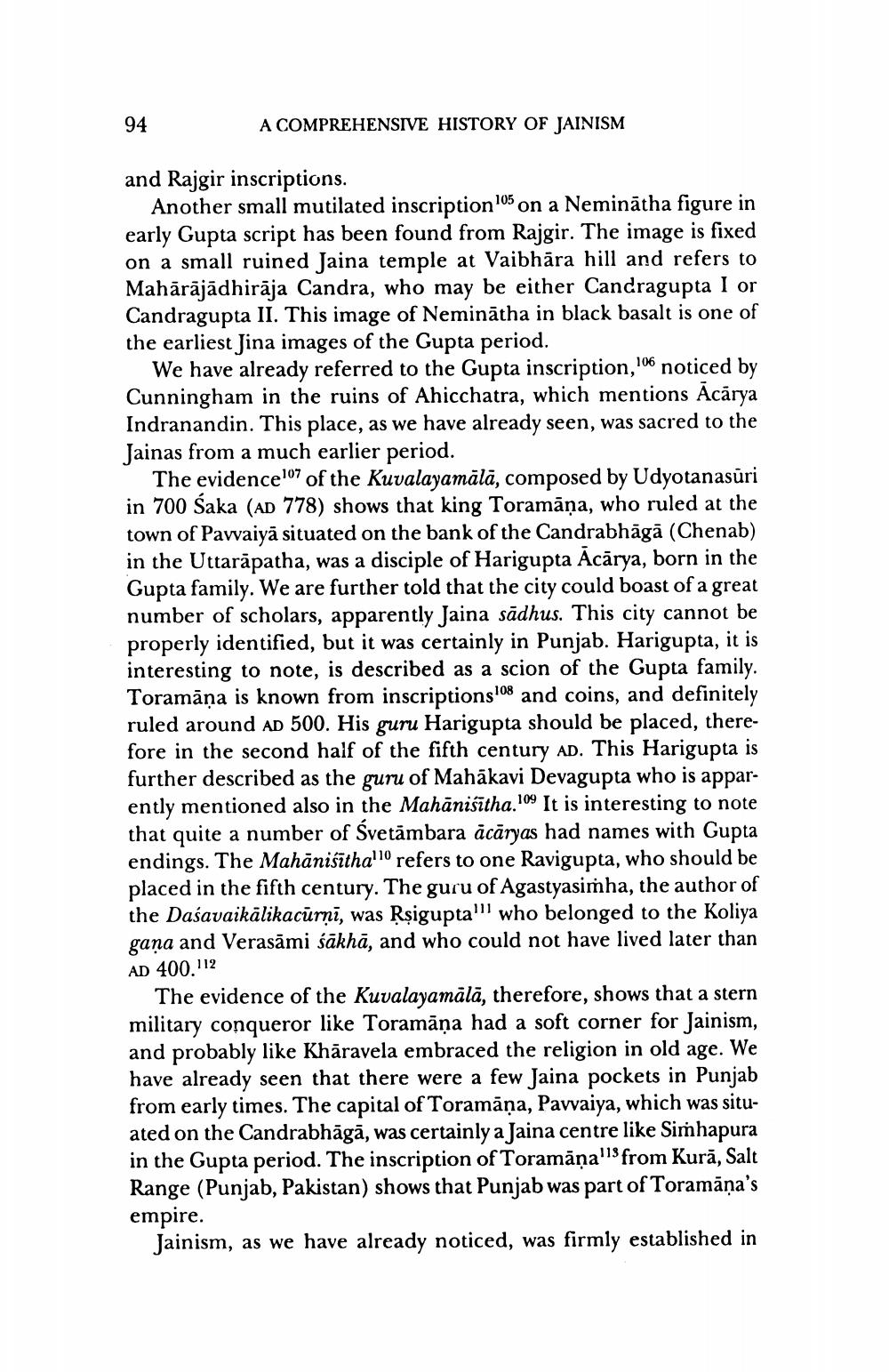________________
94
A COMPREHENSIVE HISTORY OF JAINISM
and Rajgir inscriptions.
Another small mutilated inscription 105 on a Neminātha figure in early Gupta script has been found from Rajgir. The image is fixed on a small ruined Jaina temple at Vaibhāra hill and refers to Mahārājādhirāja Candra, who may be either Candragupta I or Candragupta II. This image of Neminātha in black basalt is one of the earliest Jina images of the Gupta period.
We have already referred to the Gupta inscription,106 noticed by Cunningham in the ruins of Ahicchatra, which mentions Acārya Indranandin. This place, as we have already seen, was sacred to the Jainas from a much earlier period.
The evidence107 of the Kuvalayamālā, composed by Udyotanasūri in 700 Saka (AD 778) shows that king Toramāņa, who ruled at the town of Pawaiyā situated on the bank of the Candrabhāgā (Chenab) in the Uttarāpatha, was a disciple of Harigupta Acārya, born in the Gupta family. We are further told that the city could boast of a great number of scholars, apparently Jaina sādhus. This city cannot be properly identified, but it was certainly in Punjab. Harigupta, it is interesting to note, is described as a scion of the Gupta family. Toramāna is known from inscriptions 108 and coins, and definitely ruled around AD 500. His guru Harigupta should be placed, therefore in the second half of the fifth century AD. This Harigupta is further described as the guru of Mahākavi Devagupta who is apparently mentioned also in the Mahānisītha.109 It is interesting to note that quite a number of Svetāmbara ācāryas had names with Gupta endings. The Mahānisītha'' refers to one Ravigupta, who should be placed in the fifth century. The guru of Agastyasimha, the author of the Daśavaikälikacūrni, was Rsigupta" who belonged to the Koliya gana and Verasāmi sākhā, and who could not have lived later than AD 400.112
The evidence of the Kuvalayamālā, therefore, shows that a stern military conqueror like Toramāņa had a soft corner for Jainism, and probably like Khāravela embraced the religion in old age. We have already seen that there were a few Jaina pockets in Punjab from early times. The capital of Toramāņa, Pavvaiya, which was situated on the Candrabhāgā, was certainly a Jaina centre like Simhapura in the Gupta period. The inscription of Toramānals from Kurā, Salt Range (Punjab, Pakistan) shows that Punjab was part of Toramāņa's empire.
Jainism, as we have already noticed, was firmly established in




